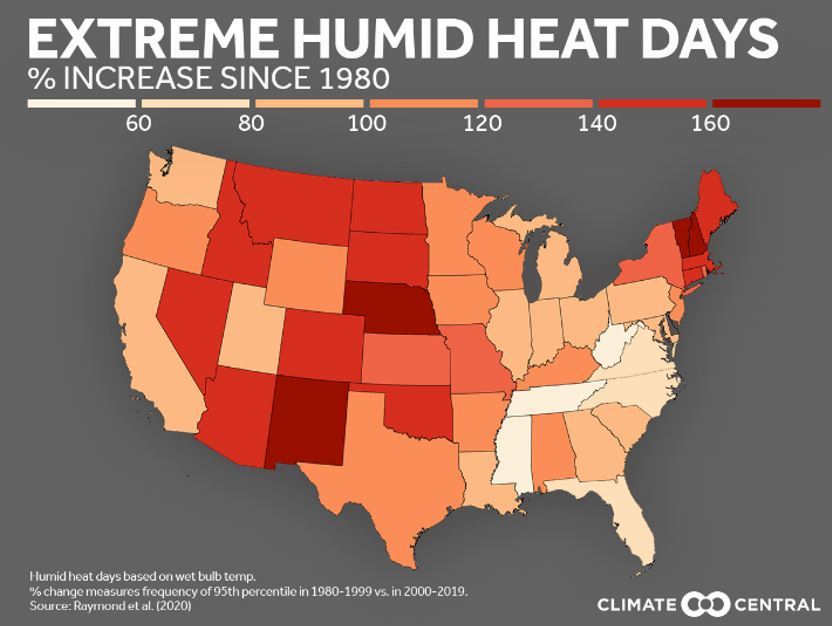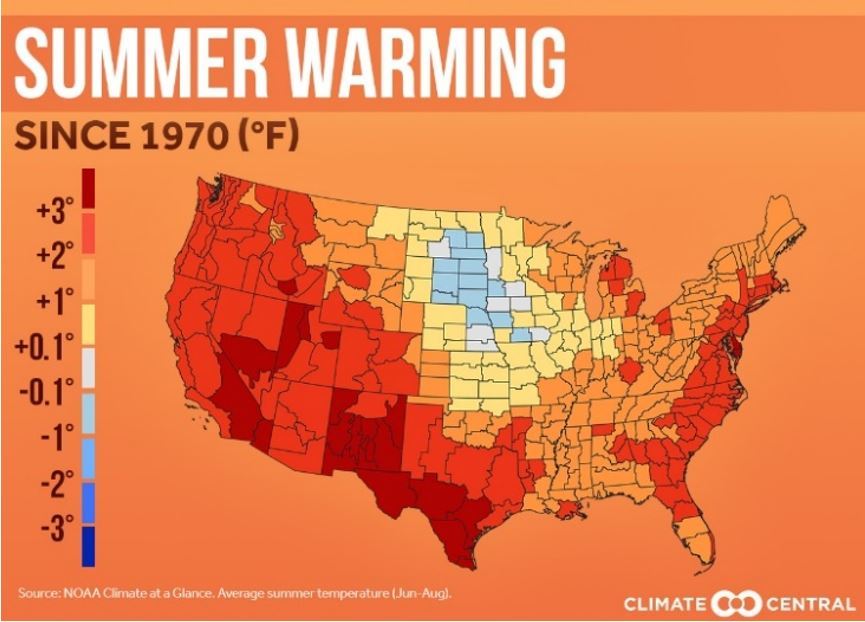
Personal Care for Extreme Heat and Community Mitigation
John A. Miller, P.E., CFM, FEMA Region 2 Mitigation Liaison
While we might not have reached the official start to summer (June 20th), we are only weeks away. If you count Memorial Day as your start to summer, we are already into the hottest season. With summer comes the potential for extreme heat.

According to an article in the New York Times last summer, New York City now definitionally falls into the humid subtropical climate zone, meaning that summer temperatures average above 72˚F and winters stay above 27 ˚F on average. The article cites the National Oceanic and Atmospheric Administration (NOAA) that reports at least a 50% increase in the number of summer evenings with temperatures above 75 ˚F, from a total of 10 nights being a rarity in the 1960s to 15 nights being common today. If you have been saying it is hotter then you remember, you are correct.
Heat is the deadliest form of weather hazards, and it’s especially dangerous when it comes with high humidity. When the dew point is over 65 it becomes very difficult to cool off by sweating, a situation that can easily turn fatal. Recent research from Columbia University shows that humid heat extremes are becoming more frequent.
We can mitigate dangerous summer heat. The CDC issues essential tips for helping stay cool during extreme heat events. For most individuals, one of the best ways to address extreme heat is to find an airconditioned space. Heat events can be deadliest in locations with lower average temperatures (such as upstate New York), where residents are less adapted to heat, and in low-income areas where many are unable to afford air conditioning and the housing is of lower quality (absorbing and retaining more heat). Physicians and emergency planners say the best defense against heat is social connection, with family or neighbors checking on elders and vulnerable individuals who are alone in sweltering weather. Cities like Phoenix and Philadelphia have implemented programs that use community groups to check in on individuals and avert heat deaths.
The COVID-19 pandemic closed many public places last year, including libraries and malls, where seniors and others typically found relief from the heat. In some cases, visiting a community cooling center is not easy for senior residents and home window air conditioners are essential.
While window air conditioners provide individualized heat mitigation and lifesaving cooling, there are also community mitigation techniques to counter high community temperatures. Heatwaves, exacerbated by what is called the “urban heat island” effect, can have 2 to 5˚F warmer temperatures than surrounding rural and semi-rural areas. Surfaces such as paving and roofs absorb and then release heat, resulting in higher temperatures in the evening.
The National Aeronautics and Space Administration (NASA) collected empirical evidence, gathered by Landsat 7 and Terra and Aqua satellites, that vegetation can mitigate urban contributions to heating. It does not take a rocket scientist to understand that the shading effects of street trees can make an improvement to the air temperature below. Further, the function of plant photosynthesis releases water into the air by evapotranspiration and cools surface temperatures, much like when people perspire. The mitigation technique here would be to add street trees in road rights-of-way, and around and within parking lots and other impervious areas. Street trees and other vegetation not only provide a softened landscape but can provide multiple benefits for urban residents.

The density of building roofs in an urban setting also contribute to the urban heat island. An additional mitigation retrofit is to cover conventional built up roofing (flat roof) with a reflective coating. Not only will this benefit the ambient air temperature, it will aid in cooling the building, thus saving electricity and costs. The New York City CoolRoofs initiative installs reflective roofs for no cost on public, non-profit and affordable housing buildings with appropriate roofing conditions; it will apply the reflective material at low cost for private building owners. NASA again reported the benefits of the mitigation technique, where a white roof was 42 degrees Fahrenheit cooler than a black roof during extreme conditions, which aggregating across a metropolitan area would contribute to the reduction of the urban heat island effect community wide.
Cooler air temperatures are not a luxury – for seniors and vulnerable populations heat-related illness threaten individual and community health. With increasing daytime and evening temperatures seniors greatly benefit from the security of air conditioning in their homes. For community mitigation, adding vegetation in the form of street trees and retrofitting roofs with reflective coatings can help reduce the urban heat island effect, and implemented widely, would reduce the demands of air conditioning over the long term.